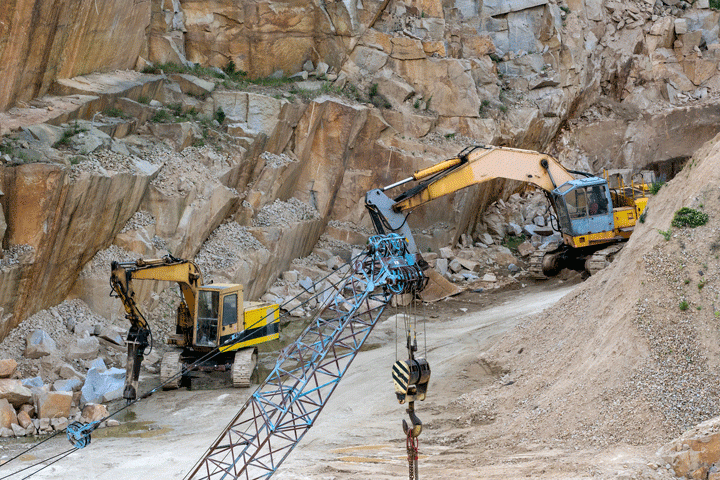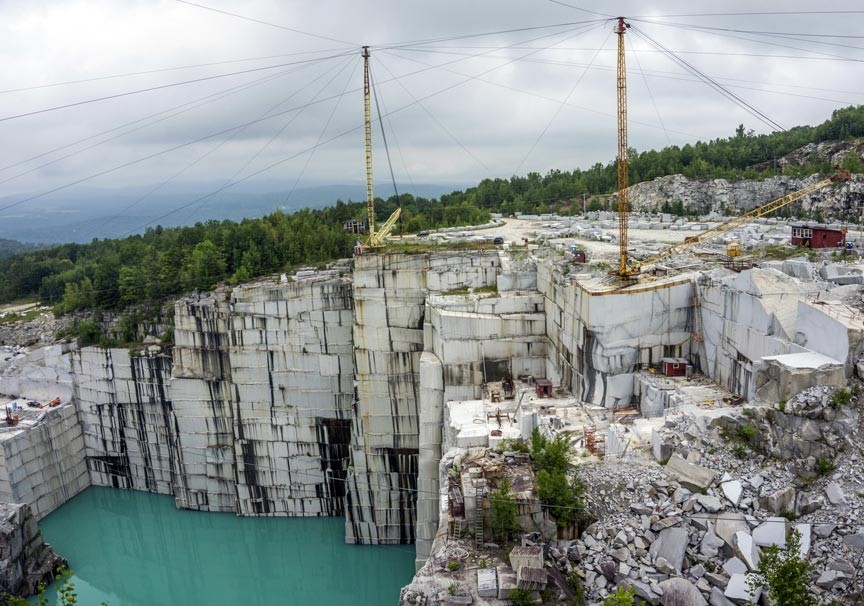The Covert Treasures: Exploring Granite Quarries in South Africa
The Covert Treasures: Exploring Granite Quarries in South Africa
Blog Article
Introducing the Mysteries of Granite Quarrying: Where Strength and Sophistication Meet
The world of granite quarrying is a realm where the raw toughness of nature assembles with human artistry to produce frameworks that stand the test of time with an air of beauty. From the midsts of quarries to the meticulous polishing in workshops, the procedure of changing granite right into architectural marvels is a complex dance of custom and technology. As we peer into the depths of this old craft, we start to reveal the hidden complexities that form the really significance of our developed setting.
The Origins of Granite Quarrying
In the record of architectural history, the origins of granite quarrying are shrouded in a tapestry of ancient workmanship and geological marvels. Dating back to ancient Egypt and Mesopotamia, the extraction of granite from quarries noted the start of a journey that would eventually lead to the production of some of the world's most famous frameworks.
Granite quarrying's origins can be traced to the competent craftsmens that recognized the stone's durability and aesthetic charm. With a combination of primitive tools and large determination, these early quarry workers uncovered granite blocks that would become the structure blocks of people.
As human beings evolved, so did the techniques of quarrying granite. The Romans, renowned for their engineering expertise, created innovative approaches for removing granite to create monoliths, temples, and roads that stood the test of time.
The heritage of these old quarrying techniques remains to shape modern architecture, with granite continuing to be an icon of stamina and sophistication in building jobs around the globe. (granite quarries in south africa)
Devices of the Quarrying Profession
The development of granite quarrying techniques from old human beings to contemporary times highlights the vital function played by the tools of the quarrying profession in forming the industry's techniques. In old times, quarrying tools were rudimentary, often including blades, hammers, and wedges made from materials like bronze or iron. These devices needed significant workforce and time to extract granite obstructs from quarries.

Furthermore, the introduction of pneumatically-driven devices and high-powered machinery has dramatically decreased the physical labor called for in quarrying operations, improving employee safety and productivity. As the quarrying sector proceeds to introduce, the devices of the profession stay at the center of driving progression and forming the future of granite removal.
Removing Blocks of Granite
Making use of accuracy equipment and advanced techniques, the extraction of granite blocks from quarries has actually come to be an innovative process in the contemporary quarrying market. The initial step entails recognizing the area and dimension of the granite deposit to identify the most efficient removal technique. When an appropriate website is selected, the extraction procedure begins with the drilling of openings for the positioning of dynamites. Controlled blowing up strategies are after that employed to disintegrate the granite into manageable areas.

Sprucing Up and Completing Techniques
To achieve a remarkable surface area on granite blocks, experienced artisans employ a collection of precise polishing and ending up methods. After the initial removal and forming processes, the granite obstructs go through an extensive polishing stage to improve their all-natural beauty and durability. One usual technique made use of in brightening granite is diamond abrasion, where commercial diamonds are made use of to grind and polish the rock to a smooth surface. This procedure not only develops a shiny surface area however also makes certain uniformity in shade and texture throughout the granite block.
In addition to sprucing up, ending up methods are applied to additional fine-tune the granite's look. These techniques may consist of flaming, honing, or brushing, each offering special appearances and finishes to fit various visual preferences. Flaming, for instance, involves subjecting the granite surface area to heats hop over to here to create a rough, textured surface, perfect for exterior applications where slip-resistance is important. Refining, on the various other hand, gives a matte finish that is smooth to the touch, ideal for indoor counter tops and floor covering. By thoroughly picking and applying these polishing and finishing strategies, artisans can transform raw granite obstructs right into elegant pieces that display both strength and elegance.

Ecological Influence and Sustainability
With the expanding focus on ecological awareness in the industry, granite quarrying practices are progressively scrutinized for their effect on all-natural sources and lasting sustainability. Quarrying for granite can have significant environmental effects. The removal procedure often entails the usage of heavy equipment, dynamites, and big quantities of water, bring about environment devastation, dirt erosion, and water contamination. Additionally, the transportation of granite from quarries to refining centers creates carbon exhausts, further adding to ecological degradation. granite quarries in south africa.
To mitigate these impacts and make sure sustainability in granite quarrying, sector stakeholders are taking on numerous measures. Executing sophisticated innovations to minimize power consumption and water usage, recovering quarried land for environmental repair, and advertising liable sourcing techniques are some approaches being used. Furthermore, certifications such as the Forest Stewardship Council (FSC) and the Management in Power and Environmental Layout (LEED) aid customers recognize eco pleasant granite items.
Verdict
In click this site verdict, granite quarrying is a process that calls for specialized devices and techniques to extract blocks of granite and polish them to a high level of surface. While the ecological influence of quarrying can be considerable, initiatives are being made to boost sustainability techniques in the industry. In general, granite quarrying is a fragile equilibrium between taking advantage of the strength and style of this natural stone while minimizing its influence on the setting.
Report this page